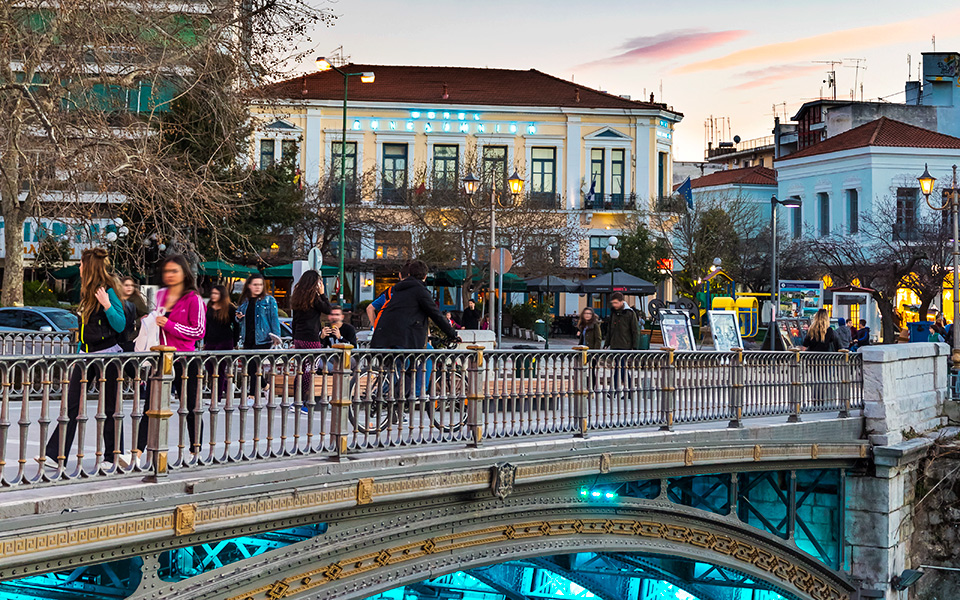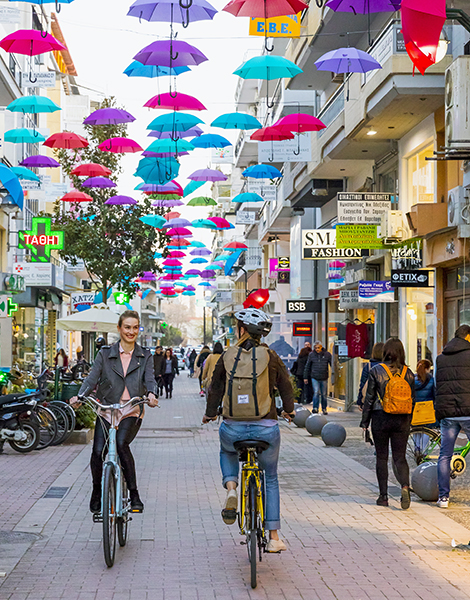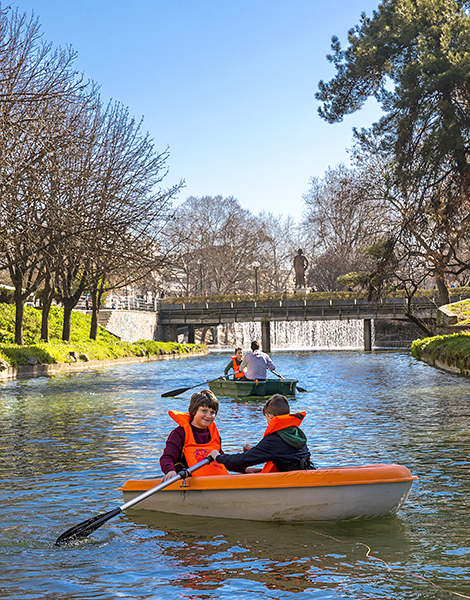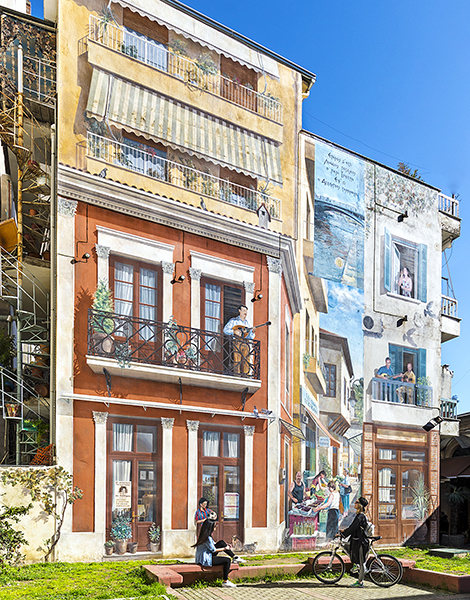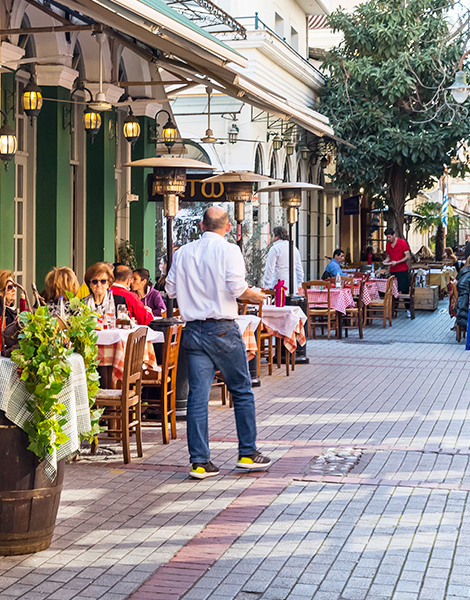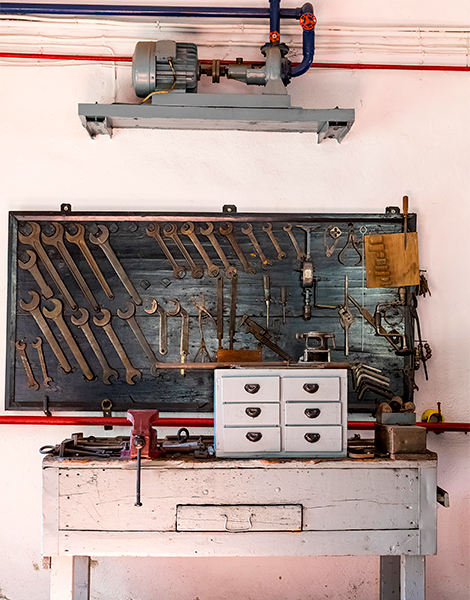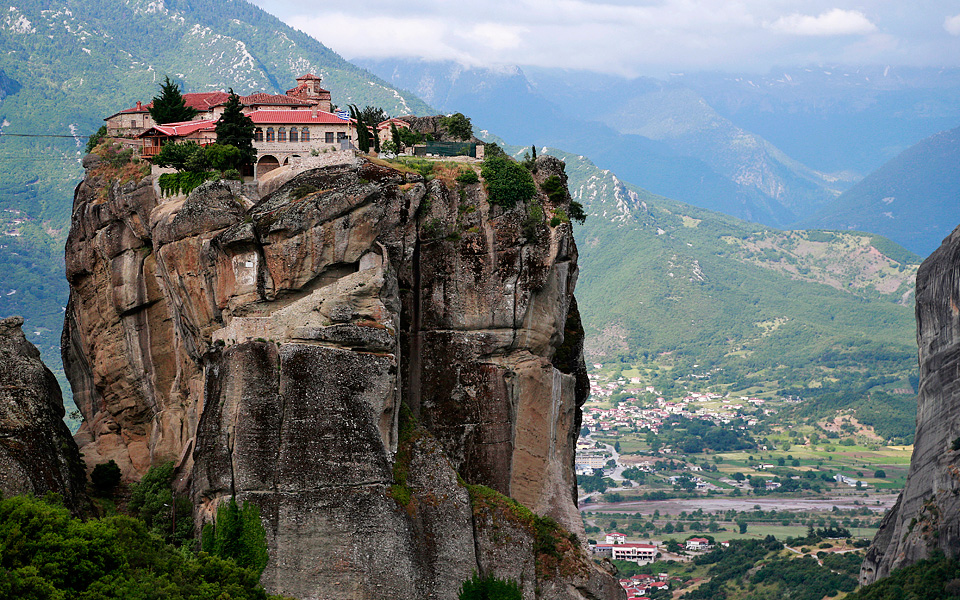5 Reasons To Make Trikala Your Gateway to the North
Easygoing and bike friendly, Trikala makes for a great jumping off point to explore the rich natural landscapes of Northern Greece.
Κείμενο: Ελευθερία Αλαβάνου
Φωτογραφίες: Διονύσης Κουρής
Located in central greece 330 km north of Athens, Trikala is a gateway into the mountainous region of northwestern Greece. While not normally high on the itineraries of most visitors to the country below are five reasons a stay in the city will not disappoint.
1. BIKE RIDES BY THE RIVER! FOR FREE!
Unlike many towns and villages in Greece, Trikala is quite flat – a fact that has contributed to the town becoming one of the most bike-friendly in the country. Three bike paths run through the city and bicycles for public use are even provided by the municipality at certain info points. One of Trikala’s nicest bike routes runs alongside the Lithaios River with its clean, cool air and swans and ducks.
If mountain biking is more your speed then its worth driving to the Hill of Profitis Ilias for rides on the area’s dirt roads through the forest.
2. THE MONUMENTS AND MUSEUMS
Trikala is a town with a rich history and has a slew of monuments bound to excite any history lover such as the Kastro (the castle built by the Byzantine emperor Justin I in the 6th century AD), the clock tower (built by the Ottomans, destroyed in WWII, then rebuilt) the Kursum Mosque (16th century) the riverside Matsopoulos Mill complex (a fantastic industrial monument built in 1884 and the first pasta factory in the country).
The old Varousi district lends itself to strolls through the narrow streets amid the traditional houses with their sahinisia – extensions of the first floors of the houses similar to northern European ‘erker’ bay windows.
The decommissioned train wagons by the train station are also utterly charming, resembling those of the legendary Orient Express. Finally the Tsitsanis Museum is worth a visit, dedicated to Vasilis Tsitsanis, one of Greece’s most important composers and songwriters who hailed from Trikala and was particularly influential in the field of ‘Rebetika‘ a form of folk music often referred to as the ‘Greek blues’.
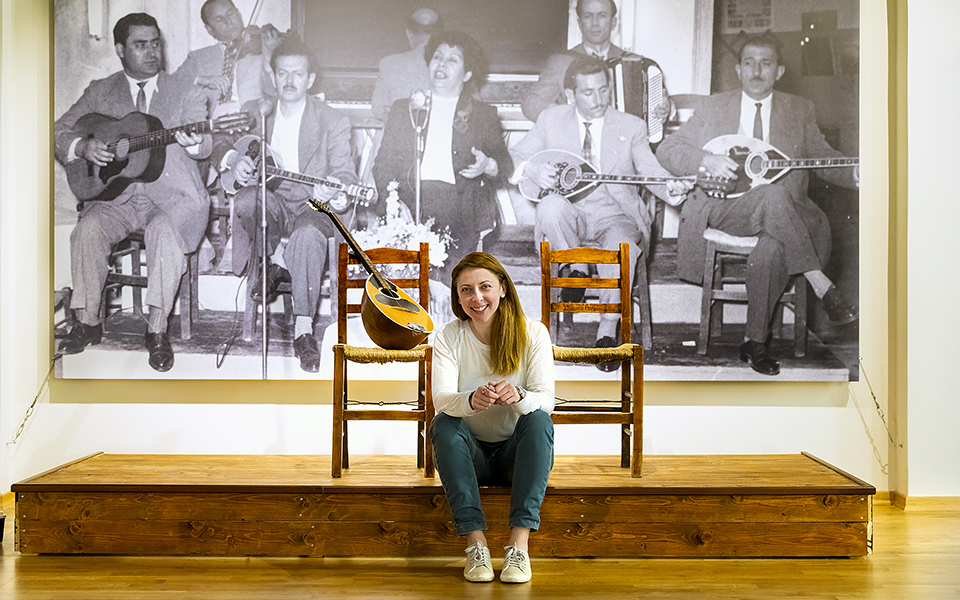
3. THE MANAVIKA
A key area for any traveller is the Manavika, an area where traders once flogged their wares, it is now full of tavernas. Here you can try any of the local specialties such as country sausage, veal liver, pork shank, lamb chops and galotyri, a fresh soft cheese similar to a thick yoghurt.
Aside from the eateries, walking through the Manavika, it is worth pausing at the huge mural on Erythros Stavros Road depicting many aspects of life in Trikala: a young boy wearing the jersey of the local team, famous local musicians, tavernas, organ grinders, bouzouki players, aristocratic mansions and the newer apartment blocks that are characteristic of Greece’s post-war development.
4. THE SODA FACTORY
There is one name that all Trikalans know: Kliafas, a local maker of fizzy drinks since 1926. Following the company’s relocation to a new site outside the town, the old bottling plant was converted into a museum space called the Kliafa History and Cultural Center. Here one can see exhibits from Trikala’s industrial past, black and white photographs of the city from times gone by, as well as a collection of old labels and bottle caps from soft drinks from around the world. These range from the familiar (Dr Pepper) to the forgotten (Afri Cola anyone?)
5. THE DAY TRIPS
A stay in Trikala opens up a wealth of potential day-trips in Central Greece, combining all of the advantages of staying in a sizeable town (restaurants, cafes, shops, the free wifi offered by the municipality) with access to some of the region’s most famous landmarks.
World-famous Meteora with its monasteries built seemingly impossibly on top of pillars of rock is a little over 30 mins away by car.
For lakeside fun visit Plastira Lake about 90mins away by car. The artificial lake is located in a beautiful area and visitors can engage in numerous outdoor activities such as boating on the lake, archery lessons and more.
The popular and quaint mountain villages of Pertouli and Elati are also easily accessible by car.
Πηγή Greece Is


